The Governor’s large body stretched out on the rug. Light from the fire flickered against his belly turning it the colour of mustard. He was snoring gently. A contented grin quivered on his slackened lips. Not wishing to disturb his claim on the prime position, his mistress, worn out by the evening’s activities, sat slumped on a hardback chair. Outside, the wind shrieked, thumping against the side of the building as if begging to be admitted.
In The Star Tavern at Cape Foulwind, as close to the fire as the mastiff would allow, we chatted with a handful of other sheltering RVers. It was the cosiest evening we spent in any of the park-over pubs we found on the South Island’s West Coast.
Kay Morgan, The Governor’s keeper and owner of the pub for the last 15 years, regaled us with tales of life on this battered bit of the South Island’s coastline and the way the locals find relief and levity in the pub’s warm sanctuary. “We have a lot of fun,” she said.
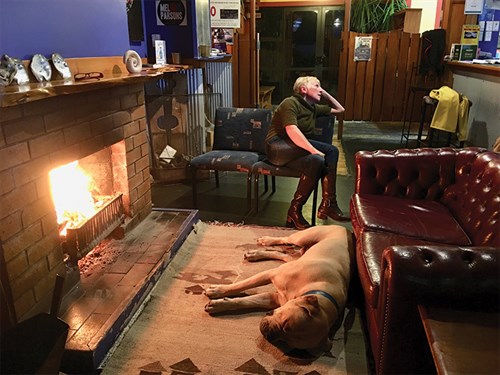
As a testimony, hundreds of bank notes were pinned to the ceiling like a host of dead butterflies. “I reckoned that if we threw enough money at it, we could get the roof repaired,” Kay grinned. “Actually, it’s just a game. People donate notes and staffers chuck them up to the ceiling. If they stick, we keep them; if they don’t, we double the donator’s money. How they stick is a secret.”
During the gold rushes and the heyday of coal mining and timber milling, there were hundreds of pubs on the West Coast (Hokitika alone had 72). As well as warmth and shelter from the brutal weather, they provided company and entertainment for lives that often lacked both. Of course, conditions have drastically improved, but in the small communities that are scattered through this monumental environment, pubs are still deeply engrained in the culture. Several of them now offer self-contained RV travellers the same succour they once offered the miners.
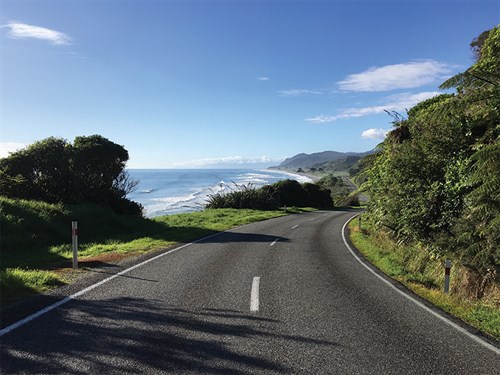
Pool and goodwill
Much further north, Karamea Village Hotel is the social centre of the tiny settlement. The first hotel was built in 1876 as lodging for the workers who came to plunder native timber. Like many hotels on the coast, it burnt down and was rebuilt on the same site in 1907.
Then, 34 years ago, along came Diana Storer with her husband Kevin, who, at the time, was helping build the Karamea Bridge. The hotel came up for sale and the Storers bought it. “It wasn’t much back then,” Diana says. “There were no meals or accommodation.”
The couple set about completely remodelling the building, taking their
ideas from a 1913 photograph to make it as authentic as possible. Nowadays, both food and lodgings are plentiful.
I can recommend the whitebait fritters, but apparently, the roast dinners are renowned.
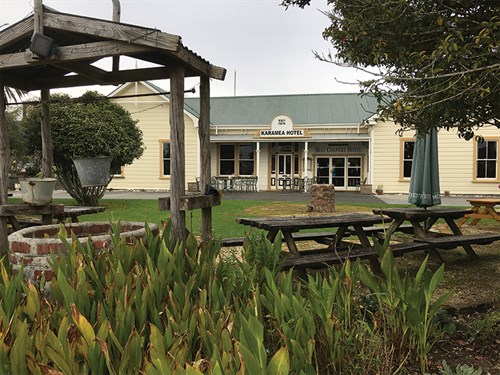
In the Karamea Hotel’s lounge bar, West Coast hospitality kicks in. If you’re there, you’re included. It’s like a family gathering. A man half my age challenged me to a game of snooker. I puffed up my old feathers and picked up the cue. Of course, I lost. No matter, the fire was warm, the food honest, and the place hummed with goodwill. September is
the ‘Wriggilus Evadus’ season when whitebaiters (motorhomers among them) descend on the little town as once the millers did.
Richard’s legacy
Down the coast, the spirit of Richard John Seddon, alias King Dick, Premier of New Zealand (1893–1906), is embedded in the remnant of Seddonville—a town that was once a flourishing coal mining community. When asked if the fledgling town could take his name, King Dick agreed as long as it became a success. Alas, it lasted only as long as the coal.
Among the few reminders of its brief triumph are the Chasm Creek and Charming Creek walkways, which follow the abandoned railway lines, and the Seddonville Hotel. The original hotel was razed in 1975 and replaced. Proprietor Graham McKenzie has been there 15 years. He’s not a Coaster (seven years to go) but for 40 years, he came there to fish before he bought the investment. “The hotel’s a happy friendly place,” he told me, “just like the whole coast.”
King Dick’s name looms again in Kumara, a little hamlet we might once have passed through without pause.
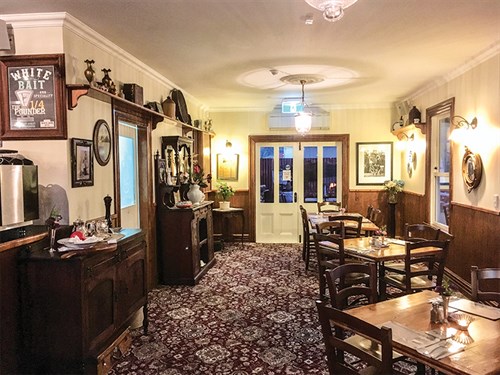
Not anymore. In the main street, the revamped Theatre Royal Hotel is an attention grabber, just as it had been 150 years ago.
In the heydays of the gold rush, it had a reputation for the desirability of
its dancing girls who cavorted with the miners. One room was apparently soundproofed with sawdust for the sort of cavorting that wasn’t to be seen in public.
A theatre was built alongside for performers, which included Richard Seddon. This famous Kumara resident was a boisterous sociable man and often grabbed the onstage limelight. When current owners, Kerri and Mark Fitzgibbon, bought the old building in 2010, it was derelict. Now it is restored as a striking, authentically furnished Victorian Hotel. So many RVers stay in the car park in summer, the villagers are thinking of opening a separate area to accommodate them.
Coal mates
As we headed north, again all hell let loose from the heavens. Six kilometres north of Greymouth, we slithered into the small, ex-coal mining town of Runanga and sought refuge from the onslaught in the carpark of the Runanga’s Working Men’s Club. This was first established in 1947 to foster the strong bonds of mateship that existed between the miners.
There were as many women as men the night we splashed into the bar to buy a Monteith’s and examine the extraordinary wall of fame that displays the area’s folk heroes. Among them are union officials and national athletes who underpin the local lore that Runanga is the home of champions.
Reefton survivor
Further inland, we stayed among the array of restored gold rush-era buildings of Reefton. Hotel Reefton, in the town’s centre, doesn’t look much like the original and is not aesthetically remarkable, but it has survived since 1889, and that alone is to be admired.
RVs are welcome to stay in the carpark.
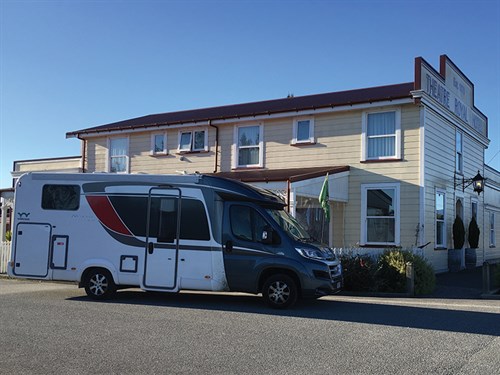
The pub is an unpretentious and genuine West Coaster with TV screens, pokies, billiards, a TAB, and a good, honest roast-and-vegie dinner.
As a watering hole for residents, it’s easy to pick up a local tip or two. At the bar, waiting for my Speights to be poured, Bob told me about the Two Bearded Miners—the old-timers who sporadically inhabit a replica 1860’s miners’ hut in the heart of town and spin yarns about the rough old days. When we called by, however, the bewhiskered storytellers were elsewhere. Things can be a bit hit and miss on the coast.
But hard to miss are the pubs that remain in the places they occupied since the first uneasy settlements began, the tangible leftovers of the area’s tumultuous past. Hopefully, some will continue to provide shelter, good food, and good company for caravanners and motorhomers for a long time to come.





